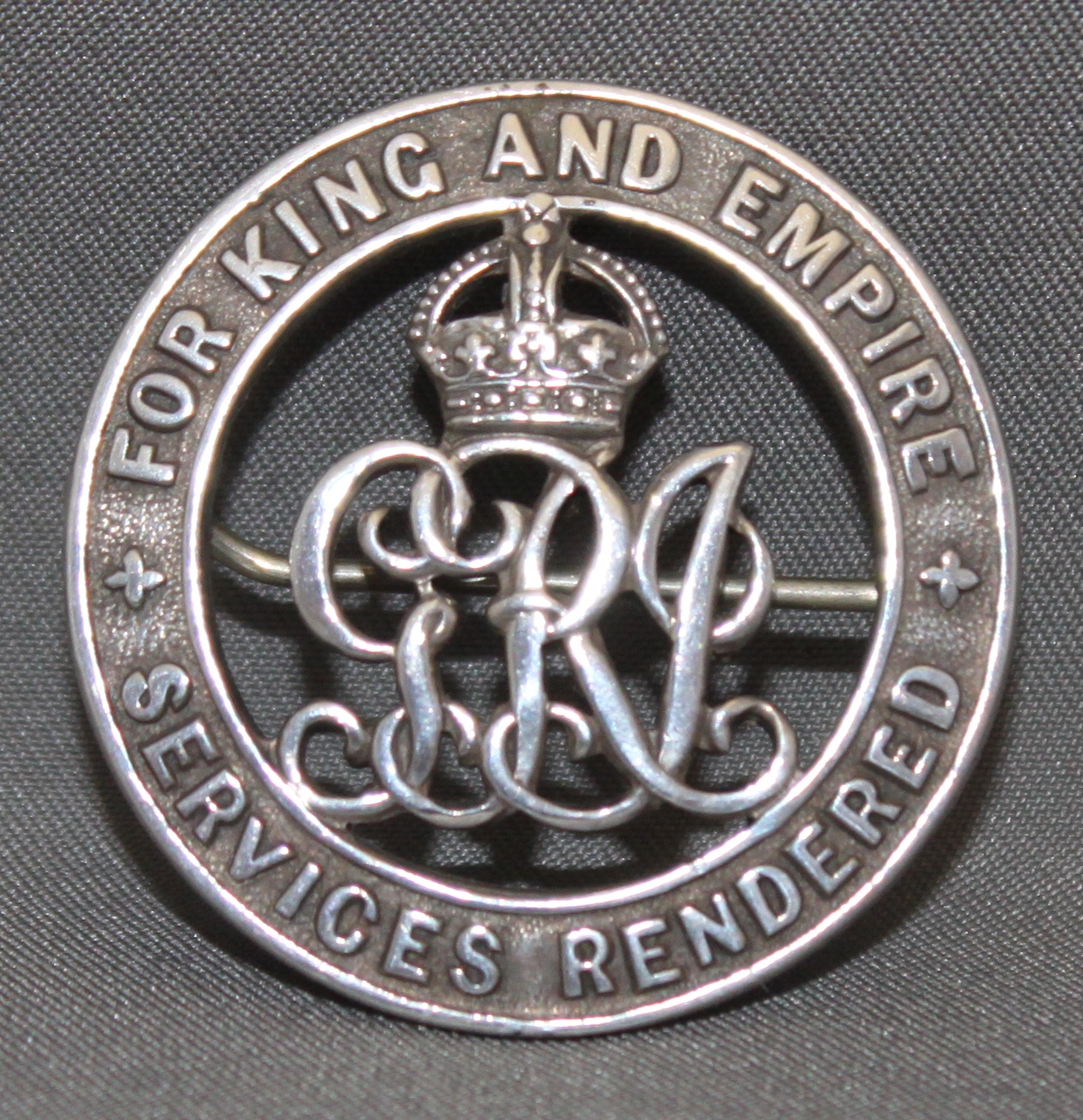Silver War Badge:
The purpose of the Silver War Badge was to protect men of military service age from abuse - if a man was thought not to be in one of the Services then he would be given a white feather and accused of being a coward. This badge was issued to men who had served in the armed forces, but had been discharged as a result of injury or illness. The badge was to be worn on the right breast while in civilian dress. Later in the war medical restrictions were modified and men that had previously been discharged were able to re-enlist. These men were permitted to wear the Silver War Badge on their uniform.
The "Roll of Individuals Entitled to the War Badge" is held at The National Archives in Kew in WO329 and a soldiers medal card will show the Silver War Badge list reference if the badge was awarded.
I had (see update below) in my own collection of medals and war badges the Silver War Badge, numbered 361316 and issued to Private Herbert Lancett of the 1st Battalion, Royal Welsh Fusiliers, regimental number 56587. Private Lancett enlisted on the 10th February 1916 and was discharged on the 8th May 1918 aged 22. In addition to the Silver War Badge, Private Lancett also received the Victory Medal and the British Medal. He had previously served in the Kings Shropshire Light Infantry as private 33298.
**UPDATE** May 2011. Paula Brice, the
great-granddaughter of Private Lancett got in touch with me and Private
Lancett's Silver War Badge has now been returned to Paula's grandmother,
aged 92, the daughter of Herbert Lancett.
The badge now shown on this page was awarded to 1431 Cadet H.V.
Wolstenholme, Royal Artillery. Harold Wolstenholme from Sheffield
enlisted on the 2nd September 1914, aged 22. He was posted to France on
the 16th April 1915, serving as a Signaller with the 3rd West Riding
Brigade. He was identified as an excellent soldier of above average
intelligence and was consequently recommended for a commission. He
returned to the UK on the 2nd March 1916 as a Cadet. Whilst training to
be an officer, a routine medical found that he was losing his eyesight,
a condition that had been exacerbated by war service. He was discharged
virtually blind on the 31st July 1916. His medal index card shows
entitlement to the 1914-15 Trio.
Many thanks to Kieran Sidley for providing Cadet Wolstenholme's Silver
War Badge
Silver War Badge
Rollover Image to View Back


Private H Lancett.
